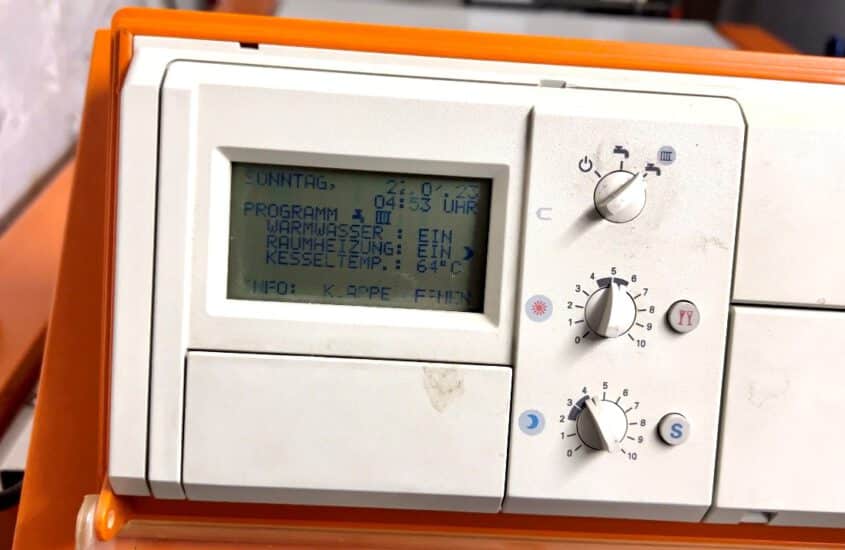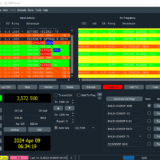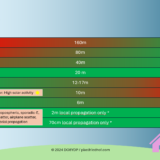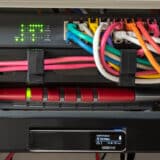Temperature controller on Viessmann Trimatic jumps between values

When turning the controls for day and night temperature of our Viessmann Trimatik heating control, the values on the display jump back and forth uncontrollably. This is a sign of ageing of the potentiometers of the rotary controls. With a little skill, you can remedy this yourself. By the way, this applies to all Viessmann Trimatik controllers, regardless of whether they have a display or not.
The electrical component that is connected to the circuit board of a rotary control is called a potentiometer (or poti for short). Over time, moisture, abrasion and other influences can cause oxidation to form on the components, which then leads to values no longer being able to be set accurately, or to scratching when operating the potentiometers on hi-fi equipment, for example on volume controls. Perhaps you have observed something like this before.
Lösen kann man das Problem oft durch ein Kontaktspray. Ich benutze immer “Kontakt 60” aus der Sprühdose *. Dieser Reiniger ist unbedenklich für elektrische Platinen und oxidlösend. Dieses Zeug braucht ihr.
The problem can often be solved with a contact spray. I always use “Kontakt 60” from the spray can *. This cleaner is safe for electrical circuit boards and dissolves oxide. You need this stuff.
- K60-100ML
- Kontakt 60 starker oxydlös. Kontaktreiniger 100ml
But how do we get the noble juice to our knobs? Relatively simple: We remove our controller from the heater, unscrew it, take out the circuit board and then spray some contact spray into the potentiometers. But step by step. However, there are two crunch points (if you are not careful in the truest sense of the word) when disassembling and reassembling the controller. I will mark these for you in the following (YELLOW).
We remove the controller from the heater and (ATTENTION) turn both temperature regulators to the far right. Then we pull the regulators forward out of the controller. On the back of the controller housing there are small lugs that we can press in with a screwdriver to open the housing.
We can now see the circuit board. The circuit board has two levels. We loosen all the small screws with which the boards are screwed into the housing and then carefully pull out the first board so that the board with the display remains in the housing. On the front we now see the potentiometers.
We give a short spray (like nasal spray) from below into the holes of the potentiometers. Then we put everything back together:
(CAUTION) When we put the control board back on the display board, we have to be careful not to break the fine contacts of the large, wide connector. This requires a delicate touch. Then screw both boards back on.
Now we close the case again by pressing the back with the lugs back into the front of the controller.
Now we put the knobs back into the controller from the front. (ATTENTION) We had turned them all the way to the right, so put them back in with the pointer position all the way to the right.
Now comes the most important part. You now move each cleaned knob back and forth several times (about 20 times – but more is better) so that any oxidation and abrasion in the potentiometer planes away.
This will most likely solve your problem. If that doesn’t save your potis because they are already too dirty, you can simply desolder them and replace them with new ones. But as a rule, contact spray should be enough.


